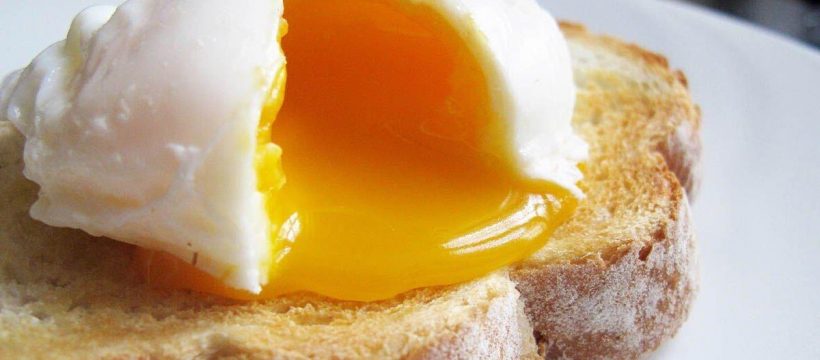
We use your sign-up to provide content in ways you’ve consented to and to improve our understanding of you. This may include adverts from us and 3rd parties based on our understanding. You can unsubscribe at any time. More info
Eggs are incredibly versatile though they are best enjoyed scrambled, fried, or poached at breakfast time. While poaching eggs is as simple as cracking them into some boiling water, it doesn’t guarantee the desirable gooey yolk. However, according to a pastry chef turned food scientist, there is an easy way to achieve the perfect texture every time. In a recent video on their TikTok page, @half_batch_baking shared the simple sieve trick.
Making poached eggs can be a gamble, with no way of knowing how they will turn out until the very last minute. Undercooking them can leave the white part, known as the albumen, watery and unpleasant while overcooking them means you miss out on the runny yolk.
However, according to the pastry-chef turned product engineer, @half_batch_baking, all you need is a sieve to make sure every part of the egg is “perfectly cooked”.
The TikTok chef explained that the key is to remove as much of the “outer albumen” as possible, which is the loose, clear substance that spreads around the yolk.
She said: “For a perfectly poached egg without any flyaways, place the egg in a sieve to remove the narrow fluid.” Do this over a small bowl to collect the liquid.

According to the cooking expert, high-quality eggs are less likely to have too much loose liquid around the “inner thick”, which is the yellow-toned liquid that immediately surrounds the yolk, as it spreads less – making them better for poaching.
Once the egg has been sieved, place four cups (120ml) of water into a saucepan and add one tablespoon of white vinegar. The food scientist noted that “it is important that it’s four cups of water”, so you should avoid guessing this quantity.
Bring the water to a boil and turn down the heat before adding the egg. To safely move the egg from the sieve into a ladle, hold the sieve so it is rested on the edge of the utensil and slowly tilt it so the yolk and “inner thick” fall out gently.
The TikTok chef explained: “You can also use a bowl to keep the ladle propped up until you are ready to use the egg.”
DON’T MISS:
The ultimate guide to buying and cooking a turkey [INSIGHT]
Woman branded ‘cheap’ for charging family £40 for Christmas lunch [REVEAL]
‘Delightful’ Christmas sausage roll recipe using just four ingredients [RECIPE]
Lower the ladle into the simmering water and gently tip the egg into the water to cook.
According to @half_batch_baking, the acid from the vinegar will “lower the egg’s coagulation temperature, speeding up the coagulation process”.
She said: “This means it will speed up the egg’s transformation from a fluid to a semi-fluid state, which helps keep the egg together, and you’ll have a perfect egg!”
You should adjust the cooking time accordingly to achieve the desired texture of your poached egg.

The TikTok chef recommended cooking them for three minutes if you like a soft boil or four minutes for a soft-to-firm egg.
If you don’t have vinegar at home or dislike the taste of it in the water, lemon juice will work just as well.
The former pastry chef explained that anything that creates an acidic environment in the water is all you need.
In the comments, she wrote: “I rinse the egg after (or put it in an ice bath) and you shouldn’t be able to taste the vinegar. I don’t notice a huge texture difference in the texture.”

While many people use the “tornado” technique, which involves creating a swirl in the water before dropping the egg in, the TikTok creator explained that this is “not needed” to make an evenly cooked egg.
In a separate video, @half_batch_baking demonstrated how to make a hybrid egg which is soft like a poached egg but cooked in a frying pan. This method is a great way to avoid a crispy fried egg, without leaving it undercooked.
Start by preheating a pan with a generous amount of oil or butter and crack an egg into it. Add one tablespoon of water drizzled around the edge of the egg, cover with a lid, and cook for 2-3 minutes.
The cooking hack expert said: “Loss of water is part of the Maillard reaction, too much water will hinder this reaction. So by covering, or keeping the moisture and water locked in provides an even heat.”
Source: Read Full Article
